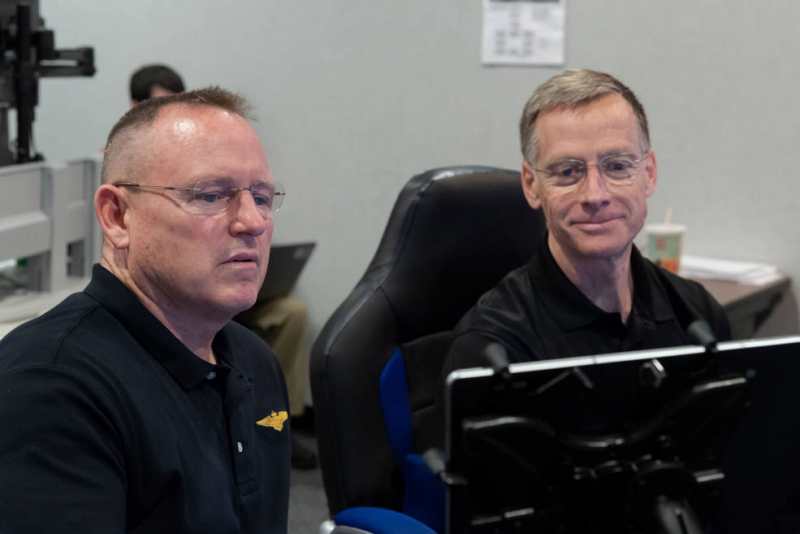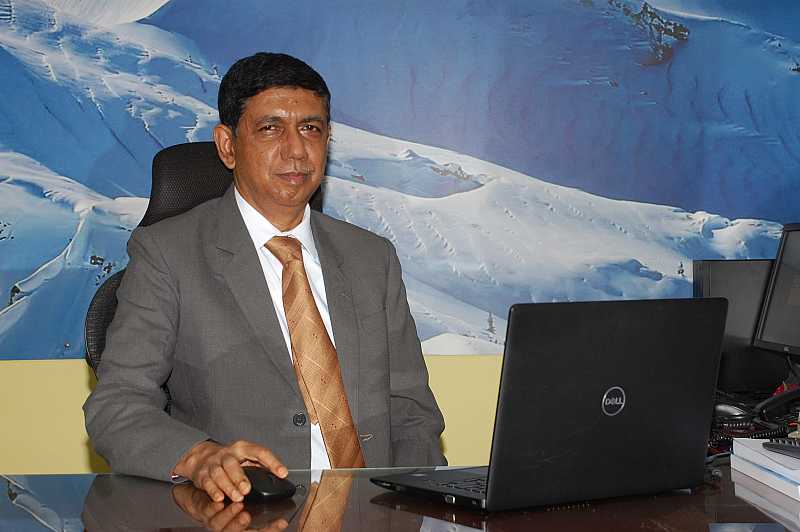 Chief of the Air Staff Air Chief Marshal Rakesh Kumar Singh Bhadauria PVSM AVSM VM ADC tells in an interview with Aeromag Asia how the Indian Air Force has comprehensively scaled up its combat capability in response to the evolving threat matrix in the region, to fight across domains over the entire spectrum of warfare. A special salute to the Force on its 88th Foundation Day.
Chief of the Air Staff Air Chief Marshal Rakesh Kumar Singh Bhadauria PVSM AVSM VM ADC tells in an interview with Aeromag Asia how the Indian Air Force has comprehensively scaled up its combat capability in response to the evolving threat matrix in the region, to fight across domains over the entire spectrum of warfare. A special salute to the Force on its 88th Foundation Day.
Air Chief Marshal Bhadauria, what was your resolve as you paid your tribute to the indomitable valour and sacrifice of the nation’s warriors on the Kargil Vijay Diwas, in the backdrop of the evolving threat matrix in the region and security challenges in the high-altitude forward bases in eastern Ladakh?
Kargil Vijay Diwas is a befitting tribute to the indomitable spirit of the Indian soldiers who surmounted all odds in the line of duty, protecting the Nation at all costs. The IAF was provided a unique opportunity in 1999 as it was called into operations in support of our ground forces. We innovated to arrive at weapon solutions and formulated tactics that allowed aircraft operations at high altitude. It was also the first time that our fighters dropped Laser Guided Bombs in an operational environment. LGBs and GPS aided bombing were extremely successful and pivotal in evicting the intruders from their dug in positions. The experience of Kargil operations has held us in good stead with consolidation of capabilities in later years that can today be brought to bear for operations in high altitude terrain. Our resolve is to modernise and build our capability to attain and maintain a combat and technological edge over our adversaries.
As the CAS who has flown the Rafale jet among a varied array of 26 different types of fighter aircraft and commanded the Jaguar Squadron as well as the Flight Test Squadron at the Aircraft & Systems Testing Establishment, what’s uppermost in your mind when you speak of enhancing our operational capability?
Our strategic priority is to ensure that we operate home grown systems backed by an industrial ecosystem with expertise in cutting edge technology. Advantage over our adversaries in the long run is possible only if such capability is driven domestically. Training and Infrastructure are also critical capability enhancers that need constant focus. If I look at the near future, the domain of Space is gaining increased significance. While we are currently putting in action plans to induct more ground and air borne sensors and combat aircraft, development of space based assets, information superiority and capabilities in this domain will also be a focus area for the IAF.
You speak of the potent combination of the Su-30 MKI and the Rafale operating together, while embracing emerging fifth generation technologies and strategic capabilities. How daunting is the challenge of integrating and operating existing assets, contemporary combat jets, mission critical systems and advanced platforms?
The IAF has many decades of experience in operating systems with different countries of origin, in addition to those designed within the country. We have adapted technologies and evolved practices to meet our requirements. Most importantly, IAF’s Integrated Air Command and Control System (IACCS) is fully operational and is already in the process of integrating the airborne data link with the IACCS. This network centric operations capability allows us to effectively employ our combat assets. Our procedures cater to integration for concerted operations. Latest inductions like the Rafale and LCA Mk 1 Tejasaircraft, LRSAM, Arudhra and Aslesha radars, SDR etc will be integrated in an optimal way to meet our induction / acceptance standards, training schedules and op employment procedures.
 In the midst of the unrelenting devastation and economic fallout of the COVID-19 pandemic, how optimistic are you about smart budgeting with regard to procurement of frontline fighter jets and missile systems, mid-life upgrade of legacy aircraft and funding indigenous projects in aerospace?
In the midst of the unrelenting devastation and economic fallout of the COVID-19 pandemic, how optimistic are you about smart budgeting with regard to procurement of frontline fighter jets and missile systems, mid-life upgrade of legacy aircraft and funding indigenous projects in aerospace?
We have re-prioritised our critical requirements in procurements and upgrades of aircraft and weapons to meet Op tasks over this decade. A priority list and smart budgeting will help meet the assigned tasks. IAF has already put in place several measures that would control our revenue expenditures without affecting our operational capability. It should be appreciated that the cash outflow for major capital projects gets extended over a long period and as such, we hope that the current crisis is contained and we will embark on a path of quick economic recovery.
What is the scope of Indian Air Force involvement in the Atmanirbhar Bharat Abhiyan interface between the private sector and public sector Defence establishments, especially with regard to LCA Mk2 and AMCA, TejasMk1 and Mk1A?
The role of the IAF has been integral to the Tejas programme. We have been in constant interface with Defence research institutes and PSUs with regard to our requirements and specifications that led to its development.
IAF has been strongly advocating an increased role of private sector in aerospace manufacturing. The big projects like LCA variants and AMCA will certainly involve the Public and Private sector in equal measure. In fact, the private sector will have increasingly greater role in design and development of defence systems / sub-systems and in some cases, to even be the lead integrator of major platforms and combat systems. The new DAP 2020 promotes Development cum Production Partner or DCPP model for defence projects and IAF fully supports it. In addition to the big capital acquisition projects, IAF is already progressing a large number of projects under Make-II, Technology Development Fund (TDF) and iDEX schemes. Equally important are IAFs’ own efforts to indegenise a very large number of spares and consumables for our existing aircraft and systems. Most of these indigenisation efforts are with the private sector.
 Now that you have presided over the formation of the second Tejas Squadron, the Flying Bullets, last May, in the initial Covid lockdown period, and the Rafale jet has been inducted into the IAF, are new contingencies going to affect your induction schedules and squadron strength?
Now that you have presided over the formation of the second Tejas Squadron, the Flying Bullets, last May, in the initial Covid lockdown period, and the Rafale jet has been inducted into the IAF, are new contingencies going to affect your induction schedules and squadron strength?
First five Rafales have been inducted into IAF on August 20. Induction of balance Rafale is on schedule. We expect more number of LCA aircraft to start inducting at Sulur soon. I am confident that HAL armed with the experience of having operated in a pandemic, will be able to ramp up its production rate and ensure timely deliveries of balance aircraft. Induction of 83 LCA MK 1A will commence in three to four years and we are hopeful that HAL will ensure accelerated delivery of these aircraft.
In the next three to four years period we will see the Rafale and LCA Mk1 squadrons operating in full strength, along with the additional Su-30 MKI and Mig-29 aircraft procured to add to the current fleet strength. The induction of the 83 LCA Mk1A will commence soon thereafter and we expect that the full complement of 83 aircraft should get delivered at a faster rate.
Finally, is the Mission Gaganyaan training programme that IAF has been overseeing on track? Could you give us an update?
The IAF pilots selected for the Gaganyaan programme have been undergoing training under the aegis of ISRO in Russia. The programme is well coordinated and orchestrated as part of national effort. The IAF pilots are in good health and good progress has been made in their training. I am sure Gaganyaan Programme will be a great success and the nation shall witness Indian Gagannauts in Space inside Indian Space Capsule launched by Indian rockets.






